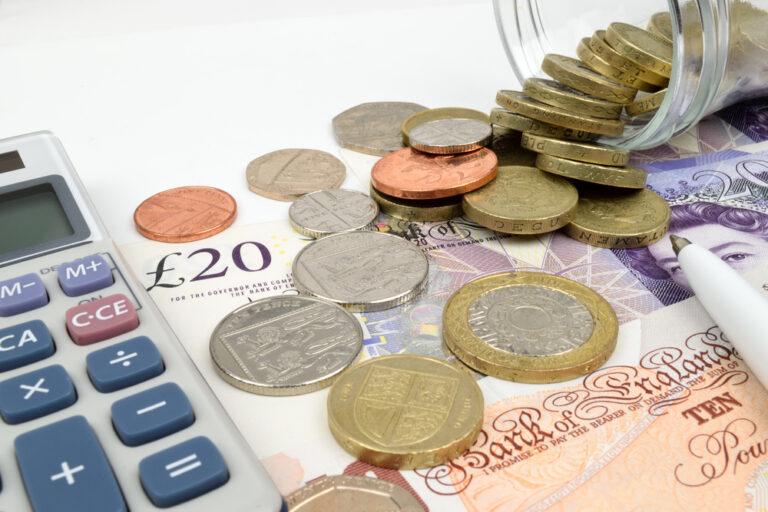Getting a mortgage is one of the most crucial parts of buying a home.
It can also be a long and stressful process, too – but there’s plenty you can do to help things run smoothly and secure the deal you need to buy your dream home.
Here, we’ll run through the process of getting a mortgage and provide some hints and tips along the way…
How to get a mortgage
Understanding how you go about getting a mortgage before you apply will help you prepare and know what to expect.
Here’s everything you need to know about the mortgage process…
1. Run through your finances and get them in order
One thing a mortgage lender will do is take a close look at your financial situation.
So, it’s important you get in there first and do the same, so you can get your finances in order before you apply for a mortgage.
Lenders dislike a high level of debt, so if you have things that need to be paid off, it’s best to get this done before you apply for a mortgage.
If you need more time to pay off what you owe, it can sometimes be best to pause your property purchase plans, before revisiting your mortgage application at a time when your finances are in better health.
Take advice from a financial advisor, who will be best placed to put a plan in place for you.
2. Check out your credit history
One part of your lender’s checks will involve them assessing your credit history.
Lenders always take on a degree of risk when loaning homebuyers money, so they’ll want to know you have previously managed debt responsibly.
Take the opportunity to look at your credit file, which can be done online through the credit reporting agencies Experian, Equifax or TransUnion.
If you have any credit accounts still open that you no longer use, shut them down.
And make sure you are registered on the electoral roll where you live.
If a credit scoring agency can’t find you, this can have a big impact on the accuracy of your credit rating.
Getting a mortgage with bad credit is possible, but it’s likely the mortgages available will be small in number, more expensive and will require a larger deposit.
2. Prepare everything you need
You’ll need to provide a large amount of documentation when applying for a mortgage, so getting everything you need ready prior to doing so can really help speed things along.
To apply for your mortgage, you’ll need:
• Utility bills for proof of address
• A passport or driving licence for proof of identity
• A P60 and your last three months’ payslips from your employer for proof of income, or certified accounts if you’re self-employed
• Bank statements showing incomings and outgoings for the past three to six months
3. Decide on the kind of mortgage you want
There are a whole host of different mortgages available, and you’ll need to decide which one works for you.
The two ways of repaying your mortgage are on a repayment or interest-only basis.
A repayment mortgage is most common, and this means you’ll pay down the loan itself and in the interest in your monthly repayments until the loan is completely paid off at the end of the term.
An interest-only mortgage sees you pay back just the interest on the mortgage, meaning your monthly repayments will be cheaper, but the loan amount itself will still be outstanding at the end of the term.
You’ll also have to choose which type of mortgage product and rate you want. These include:
• Fixed rate mortgages, where your payments are fixed for a period of time
• Discounted rate mortgages, where your payments can go up or down along with your lender’s Standard Variable Rate (SVR)
• Tracker mortgages, which can go up or down along with the Bank of England base rate
An independent financial advisor will be able to guide you through the best option for you.
4. Speak to a mortgage broker about your options
When exploring mortgage products and interest rates, it’s often best to speak to a mortgage broker.
Brokers may have access to more mortgage products from many different lenders and can advise on the best options for you and your situation.
5. How to get a mortgage agreement in principle
Once you have all your finances in order, have explored mortgage options and are confident you are in a good position to borrow, it’s time to seek a mortgage agreement in principle (AIP).
An AIP is an indication of what a lender may be prepared to loan you to buy a home and while getting one is not a required part of the process, it can help when you come to make an offer on a property. Sellers are always keen to see evidence buyers can proceed quickly.
And while an AIP is not a cast-iron guarantee of a mortgage, it does show a seller that you are some way towards achieving your borrowing aims.
This can put you in a great position with a seller and help ensure you secure your dream home.
Speak to your chosen lender about an AIP – some can even be done online in very quick time.
But remember: An AIP is not a guaranteed mortgage. You’ll still need to go through the more detailed application and affordability process once you have secured an offer on a property.
6. Complete your application
Once you’ve found a property to buy, you can complete your mortgage application based on your purchase price and the amount you hope to borrow.
This is the stage when your lender will undertake detailed affordability checks and look more closely at your finances before they decide whether or not to offer you a mortgage.
How long does it take to get a mortgage?
The time it takes to get a mortgage can vary depending on a number of factors.
In a busy market, with lots of transactions, lenders can become extremely busy.
And if your application requires a more detailed look into your finances, or your lender requires further information from you to proceed, your application could take longer. According to the Homeowners Alliance, the average time it takes to get a mortgage offer is two to four weeks, but you should always prepare for this timeframe to be longer.
How to get a mortgage when self-employed
If you’re self-employed and applying for a mortgage, your lender will require some additional information and documentation to proceed with your application.
Getting a mortgage when you’re self-employed can sometimes be harder because you may have fluctuations in income.
To be classed as ‘self-employed’ with your lender, you could be a sole trader or a limited company director.
In order to assess your income and undertake affordability checks when self-employed, your lender will need:
• At least two years’ certified accounts
• A SA302 form or tax year overview from HMRC covering at least two years
• Contracts showing any long-term work and evidence of any incoming work
• Evidence of dividend payments if you’re a limited company director
You’ll also need to provide proof of identity, address and three-to-six months of bank statements.
How to get a mortgage as a first-time buyer
One of the most daunting processes for first-time buyers is getting a mortgage.
Getting accepted for a home buying loan is essentially the difference between getting on the property ladder or not.
So making sure you are in the best possible position to breeze through the mortgage application process is vital.
Here are some key things you can do to improve your chances of being accepted for a mortgage…
1. Set your budget and stick to it
Going into a property purchase with no clear idea on what you want to spend and what you can afford to spend is never a good idea.
Work out what you can potentially borrow, based on your income.
The best way to do this is by using an online mortgage calculator, although it’s important to stress this is only to provide an estimate of your borrowing potential.
2. Save as big a deposit as you can
Saving a deposit as a first-time buyer is never easy.
But the larger your deposit, the more choice you’ll have when it comes to mortgages and the more likely you are to be accepted.
You’ll also benefit from better interest rates if you can bring down your loan to value with a larger deposit.
Loan to value is the amount of your property’s purchase price that’s covered by a mortgage.
So, if you’re buying a flat for £200,000 and your deposit is £20,000 (10%) that’s a loan to value of 90%.
Getting your loan to value down below 90%, and even 80% if you can, could see you qualify for more attractive mortgage rates and provide more peace of mind for your lender that your mortgage is affordable.
So… save as much as you can!
3. Stay away from ‘unusual’ properties
As well as your own personal finances, lenders will be looking at the property you want to buy and assessing its current value, future value and sell-on potential so they can be certain they’ll get their money back.
So, try to stick to properties that will hold their value and don’t contain any unusual intricacies that could affect sell-on potential.
That could mean staying clear of flats and apartments above commercial premises, old or unusual building designs or properties constructed from non-standard building materials.
Further reading…
The launch of the government’s 95% mortgage guarantee scheme could mean you’re able to obtain a mortgage with a smaller first-time buyer deposit. Our guide explains everything you need to know.
And if you are looking to buy your first property, there’s a lot of helpful information you can get from an estate agent – if you know the right questions to ask.





